Are you curious about the weight of a medium potato? Potatoes are a beloved ingredient in countless recipes, but determining their exact weight is a bit challenging. Don’t worry, we are here to help.
Today will be discussing how to weigh potatoes accurately and also get insights into important considerations before buying them.
Let’s get right into it!
Contents
Decoding the Size of a Medium-Sized Potato
A medium potato’s size and shape typically can vary significantly by type. Some potatoes are round, while others may be somewhat irregular. Baked potatoes can be a bit smaller than raw medium potatoes.
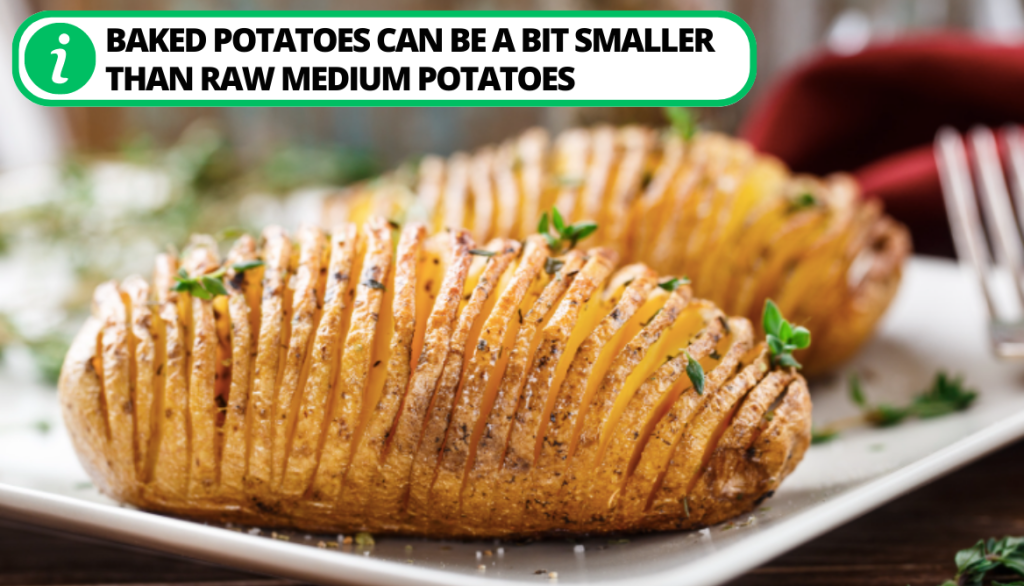
- On average, a row of medium-sized potatoes weighs around 0.34 pounds.
- It is typically about 2.5 to 3.5 inches in diameter.
What Is the Weight of a Medium Potato?
The largest potato on record reached a staggering weight of 7 pounds and 1 ounce! While such an impressive size may be deserving of accolades, it proves highly impractical for everyday use. Imagine the challenges of attempting to cook such a behemoth!
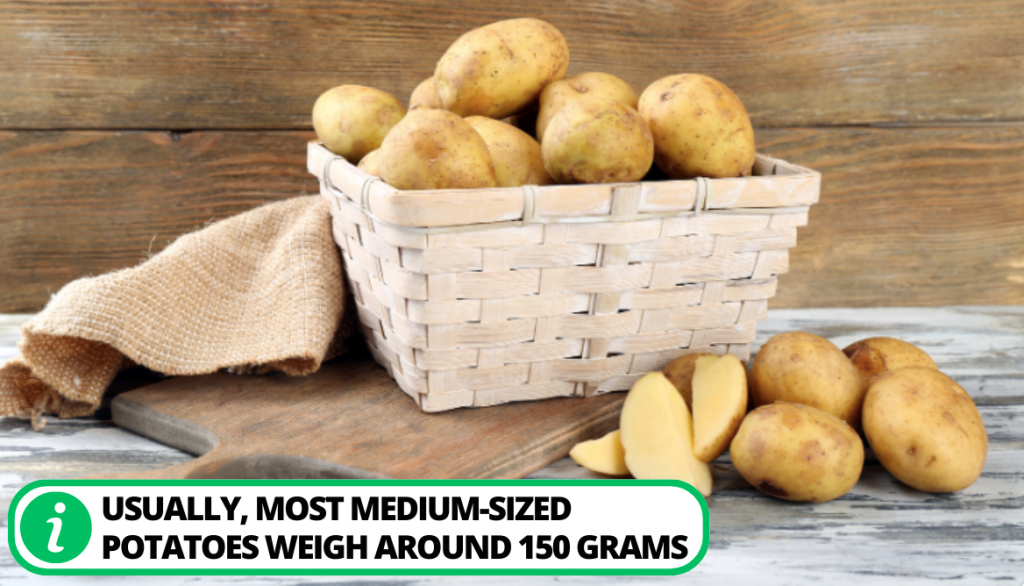
Back to the standard medium potato, with its skin intact, typically weighs approximately 140 to 280 grams. Within this range, the weight can vary based on factors like:
- Maturity
- Potato Variety
- Individual size
However, usually, most medium-sized potatoes weigh around 150 grams. By knowing this weight range, you can ensure your recipes are consistently balanced.
Understanding Size and Weight: White, Red, Yellow, and Russet Potatoes
How much does a potato weigh? There are several types of potatoes, so we’ll look into a couple of the most common ones.
Size | Measurement | Weight in Grams |
Small Potato: | 1 3/4 to 2 1/4″ diameter | Less than 140 grams |
Medium Potato: | 2 1/4 to 3 1/4″ diameter | 140 – 280 grams |
Large Potato: | 3 1/4 to 4 1/4″+ diameter | More than 280 grams |
Here is a chart comparing sweet potatoes:
Size | Measurement | Weight in Grams |
Small Potato: | 4″ long, 1 3/4″ diameter | 60 grams |
Medium Potato: | 5″ long, 2″ diameter | 114 grams |
Large Potato: | 5 3/4″ + long, 2 1/2″ diameter | 180 grams |
Let’s explore the weight considerations for medium sweet potatoes in their raw and chopped forms:
Weight of Raw Sweet Medium-Sized Potatoes
The weight of raw medium sweet potatoes is slightly above a quarter of a pound. It mainly depends on the length measurement. Most potatoes tend to measure around 5 inches. Generally, it is safe to assume that their weight will be approximately 0.25 pounds.
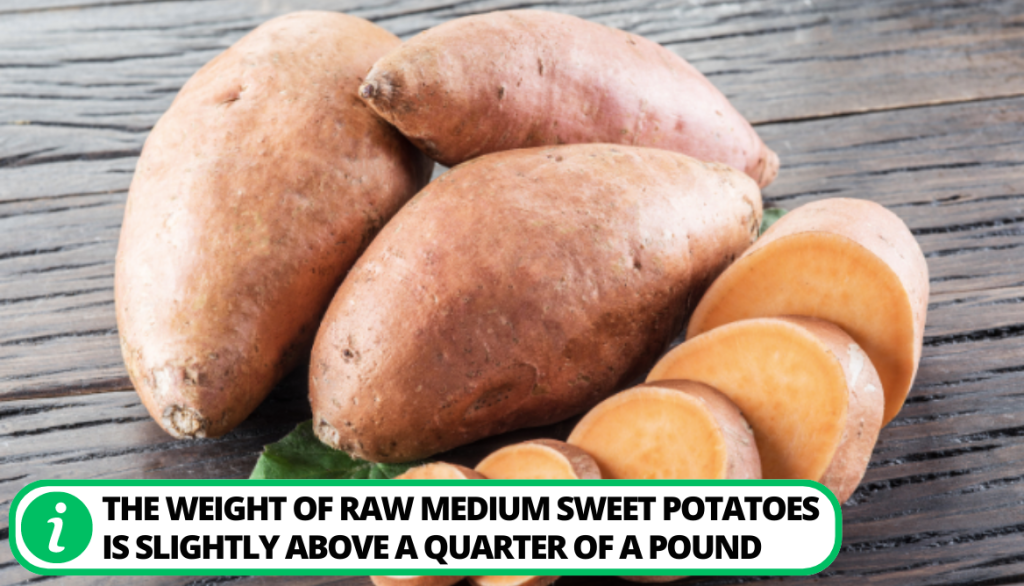
Weight of Chopped Medium Sweet Potato
You might be thinking, how much does a medium sweet potato weigh when it is chopped? If you have utilized all the pieces without any wastage, it should weigh approximately a quarter of a pound.
Potato Measurement and Weighing: 3 Useful Tips
Sweet potato farmers and grocery stores employ a sizing system to categorize and distribute potatoes. When purchasing a bag of potatoes, it is customary for all the potatoes within to be uniform in size.
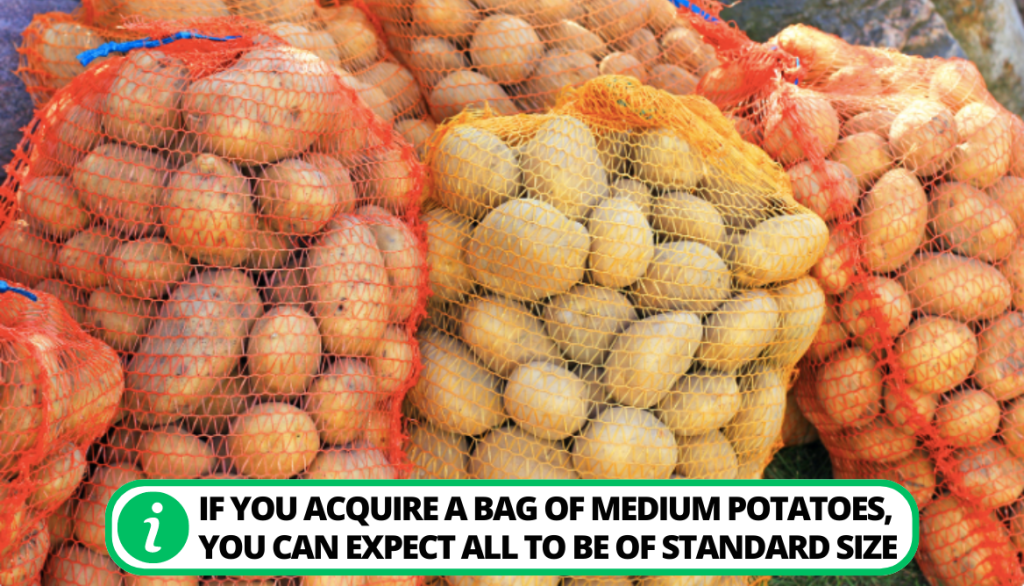
For instance, if you acquire a bag of medium potatoes, you can expect all to be of standard size. The following scale is commonly employed:
- Size “A”: These potatoes typically measure 2.5 inches in diameter.
- Size “B”: Falling within the range of 1.5 to 2.25 inches in diameter.
- Size “C”: This category encompasses potatoes with a diameter of less than 1.5 inches.
This sizing system ensures consistency in the size of the potatoes, facilitating easier meal planning and cooking preparations.
Measuring at the Store
Raw potatoes, whether sold individually in the bulk sections of grocery stores or in bags, generally adhere to the store’s measuring system mentioned above.
- It categorizes them into sizes A, B, and C based on their diameter.
- The measuring process primarily revolves around assessing the diameter of the medium potato.
- This allows for a standardized approach to determining the appropriate size classification for the average medium potato.
- The diameter-based measuring system remains consistent.
- This ensures clarity and uniformity in medium potato sizing, enabling customers to make informed choices according to their preferences.
Home Measuring
At home, you have the option to employ the same measuring system used in stores by measuring the diameter of your raw potatoes.
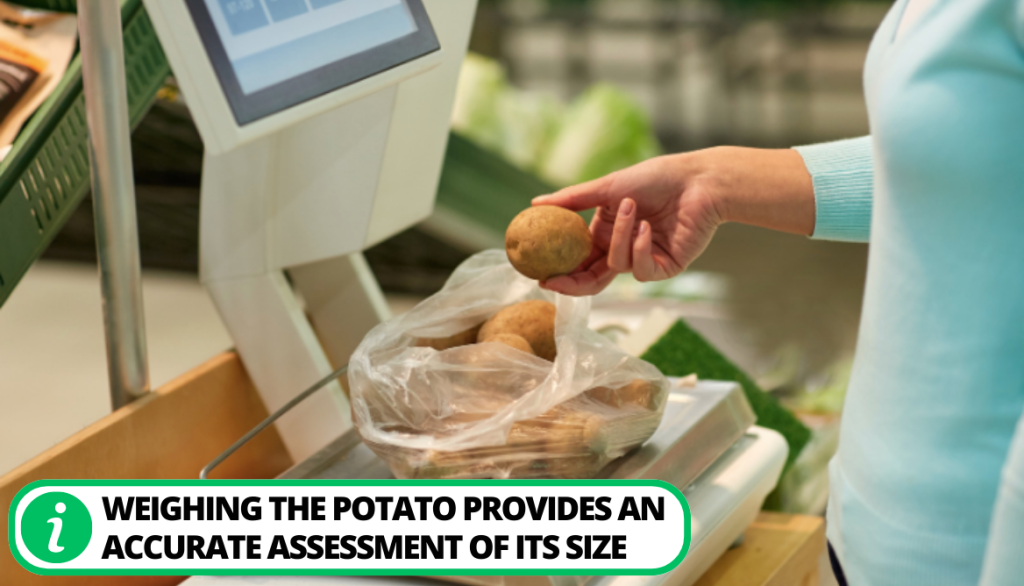
- This can be done by using a ruler or a measuring tape to determine the width of the Russet potato.
- Alternatively, you can also measure the weight of the Russet potato using a kitchen scale.
- Weighing the potato provides an accurate assessment of its size.
- It is particularly useful when precise measurements are required for recipes or portion control.
Visually Measuring
If you become familiar with the measuring process.
- There comes a time when you can just visually tell how much a medium potato weighs.
- It is easy to establish this system by only looking at the medium size potato or by holding it in the hand.
Important Considerations When Buying Medium Potatoes
When it comes to buying potatoes, there are several important factors to consider. These considerations will help you in ensuring that you select the best potatoes for your culinary needs. Let’s dive into the key aspects to consider when purchasing potatoes:
Freshness
Freshness is a crucial aspect to consider when buying potatoes. Opt for potatoes that exhibit signs of being recently harvested.
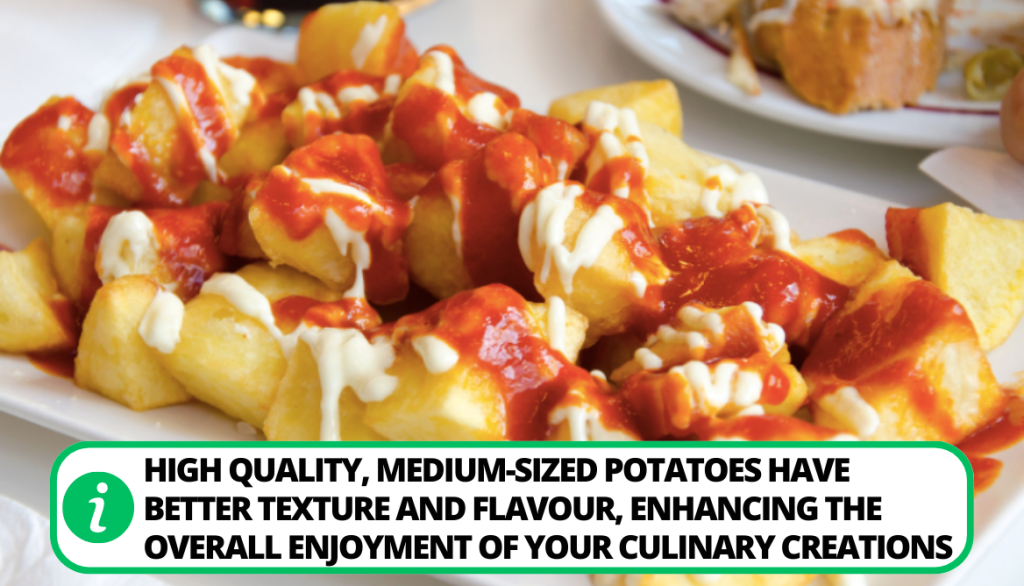
- Defects: Avoid those with rubbery skin, dark spots, or any liquid seeping from the skin. These indicators often suggest older or less desirable potatoes.
- Good Quality: Also, prioritize selecting potatoes of good quality. Look for potatoes that are firm and free from blemishes. This ensures that you will achieve favorable results when cooking with them.
- Flavor and Texture: High-quality medium potatoes tend to have better texture and flavor, enhancing the overall enjoyment of your culinary creations.
Once experience enough, you can tell by the look that how many medium potatoes are fresh.
Flavor
It is also important to keep in mind how many potatoes are flavorful.
- Look out for desired flavor: When buying potatoes, it is essential to consider the desired flavor profile you wish to achieve in your dishes. For instance, sweet potatoes offer a distinct flavor compared to Russet potatoes.
- Get yourself familiar with different varieties: Conducting research and familiarizing yourself with various potato varieties and their intended purposes is highly recommended.
This knowledge empowers you to make informed choices based on the specific qualities and attributes of each potato type.
Appearance
The appearance of potatoes is closely intertwined with their freshness. Prior to making a purchase, it is crucial to assess the appearance of the potatoes to ensure their freshness.
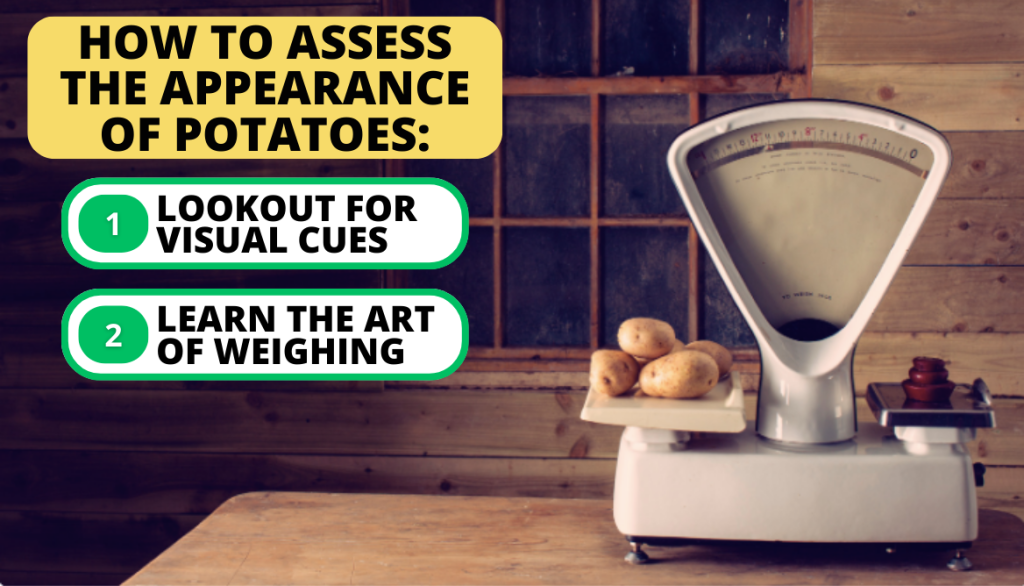
- Lookout for visual cues: If potatoes have been stored for an extended period, signs of deterioration become evident. These visual cues indicate that the potatoes may be in the early stages of the rotting process.
- Learn the art of weighing: You should also know how much a medium potato weigh. It will help you in selecting the perfect size for your needs.
Now, we will move on to discuss the pros and cons of potatoes. Keep on reading!
The Good and Bad of Potatoes
Undoubtedly, potatoes have bestowed numerous benefits upon our lives. But, there are also inherent disadvantages associated with their consumption. Let’s take a look at the advantages and disadvantages of potatoes:
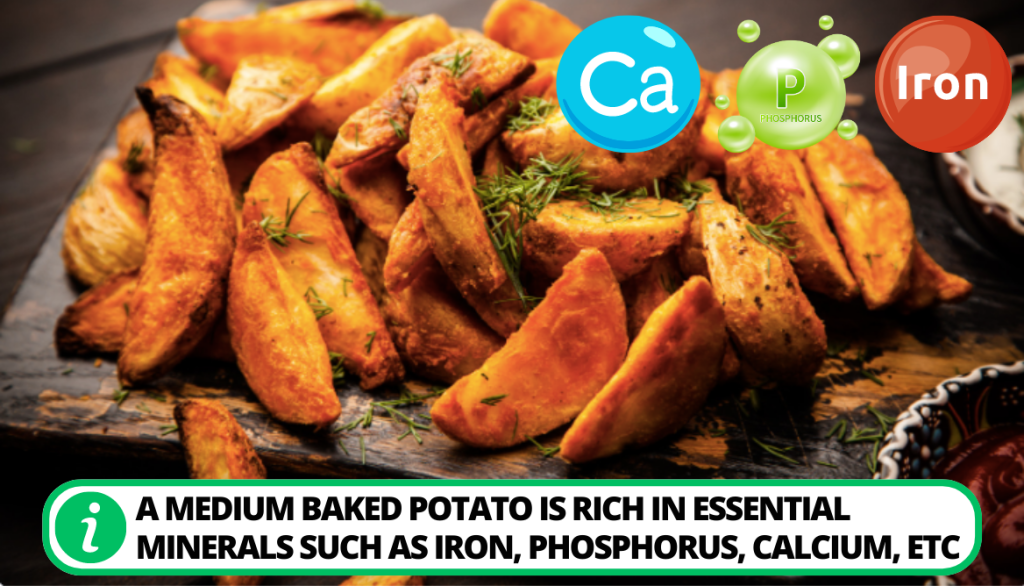
- A medium potato serves as an affordable source of food such as french fries. They are even utilized in the production of drinks like vodka.
- Potatoes possess excellent antioxidant properties. That’s why they are used in various medicines, skin creams, and beauty products.
- A medium baked potato is rich in essential minerals such as iron, phosphorus, calcium, etc. All of these contribute to the overall health and strength of your bones.
- A Russet potato provides a significant source of carbohydrates. While beneficial in moderation, excessive consumption of medium potatoes contributes to weight gain.
- Consuming large quantities of potatoes also have negative effects on the digestive system, including abdominal cramping, diarrhea, and constipation.
- They are considered calorie-dense, with approximately one calorie per gram. This aspect should be taken into account when considering their overall caloric intake.
FAQ
How many grams is a medium potato?
A medium potato typically weighs around 140 to 280 grams. The exact weight may vary depending on the specific size and variety of the potato.
How many grams does 1 potato weigh?
The weight of a single potato can vary depending on its size and variety. Typically, the weight of 1 potato is about 110 to 280 grams. Keep in mind that their weight is influenced by factors such as moisture content, variety, and maturity.
How many potatoes is 500g?
The number of potatoes needed varies depending on their size and weight. As a rough estimate, approximately 2 to 4 medium-sized potatoes would amount to 500 grams.
How many pounds are 2 medium potatoes?
On average, 2 medium-sized potatoes would weigh approximately 0.5 to 1 pound. Note that it depends on the specific size and variety.
Conclusion
Summing it up, the weight of a medium potato is around 140-280 grams. Its size depends upon different factors like maturity and variety.
Potatoes boast health benefits such as antioxidants and essential minerals. Whenever you want to buy them, consider factors like flavor, freshness, and appearance. So, if you’re following a recipe or simply aiming for consistent cooking results, having a grasp of potato weights empowers you in the kitchen.
Which potato size do you normally buy and why? Share your thoughts in the comments!
- How to Get Potatoes to Sprout Eyes: Detailed Growing Guide with 3 Options - July 31, 2023
- Weight of a Medium Potato: Revealed in Detailed Guide - July 29, 2023
- Maris Piper Potatoes: 9 Substitutes You Should Know About - July 27, 2023
Hello! I’m Jessica Zander, a garden coach and consultant based in the Boston area (zone 6b), offering virtual consultations across the country and Canada.
I’ve been passionate about gardening since the early 1990s, and in 2022, I launched You Can Do It Gardening to empower individuals to feel more confident in their gardening endeavors.
Following a 30-year career in nonprofit finance and operations, I transitioned out of that field in mid-June of 2023 due to the growing demand for coaching services. Interestingly, my years of presenting financial statements to boards and finance committees proved to be valuable experience for teaching people about gardening! I enjoy sharing skills, providing guidance and suggestions, and collaborating efficiently with clients to make significant improvements to their outdoor spaces, both small and large. I also regularly teach at the Arlington Continuing Education and Cambridge Adult Education.
My approach is direct and practical, akin to Mary Poppins, but tailored to your garden. Clients find satisfaction in saving money and taking pride in their own gardening achievements.

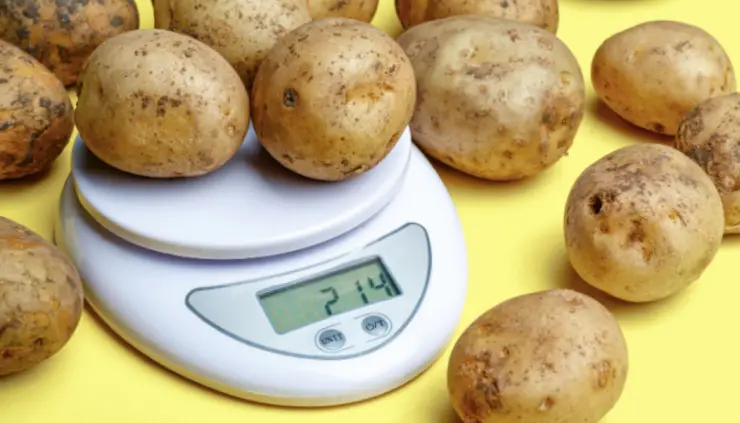

Add comment